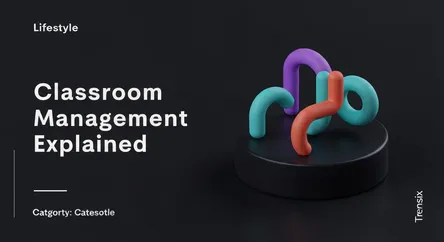Lifestyle
Classroom Management Explained

Discover the essential strategies and techniques teachers use to create positive, productive, and well-organized learning environments for all students.
What is it?
Classroom management refers to the wide variety of skills and techniques that teachers use to keep students organized, focused, attentive, and academically productive. It's not just about discipline; it encompasses creating a positive learning environment, establishing clear routines, arranging the physical space, and fostering respectful student-teacher relationships. Effective strategies aim to prevent disruptive behavior before it starts, ensuring that instructional time is maximized and students feel safe and supported.
Why is it trending?
There's a growing emphasis on holistic and inclusive education, moving away from purely punitive measures. Educators and researchers are increasingly focused on social-emotional learning (SEL) and trauma-informed practices, which are integral to modern classroom management. The challenges of post-pandemic learning, including increased student anxiety and learning gaps, have also highlighted the critical need for supportive and structured classroom environments to re-engage students effectively.
How does it affect people?
Effective classroom management profoundly impacts everyone in the educational ecosystem. For students, it creates a predictable and safe environment that reduces anxiety and promotes higher academic achievement. For teachers, it lowers stress levels, prevents burnout, and increases job satisfaction. It also positively affects parents, who can be confident that their children are learning in a well-structured, positive atmosphere conducive to growth.